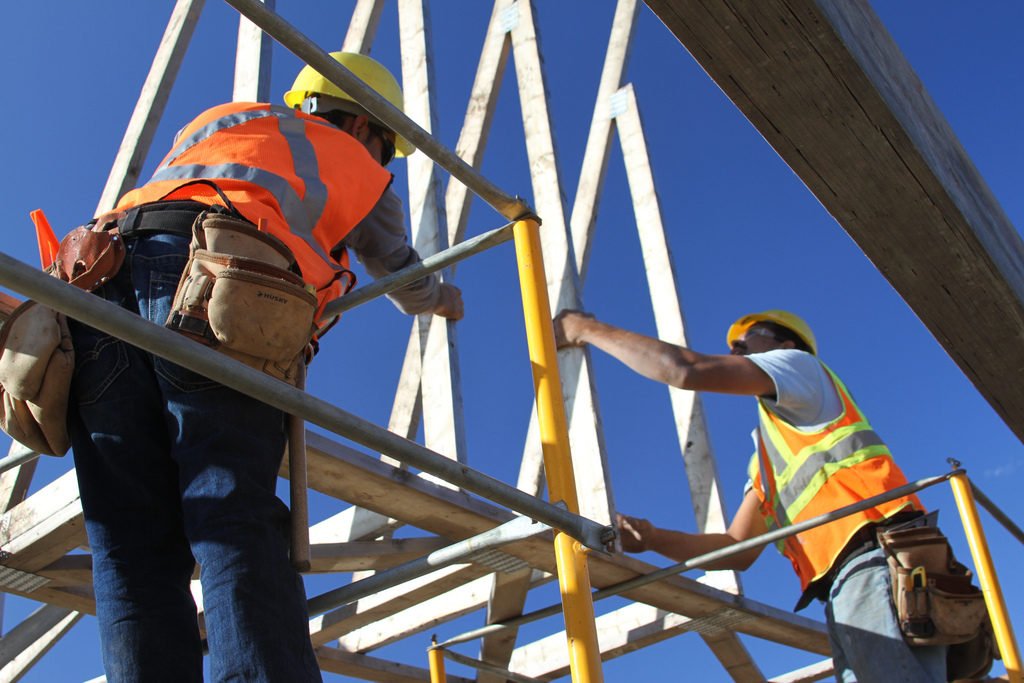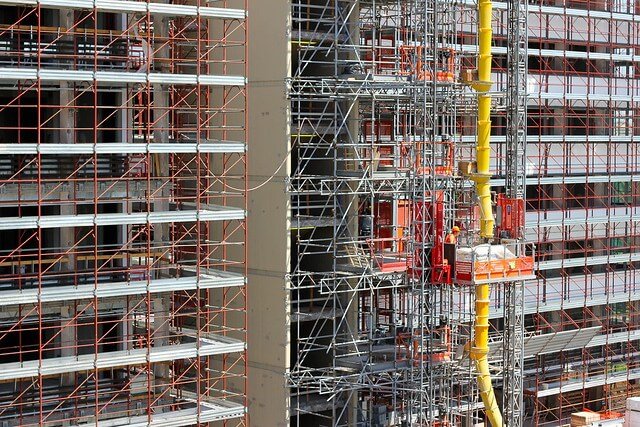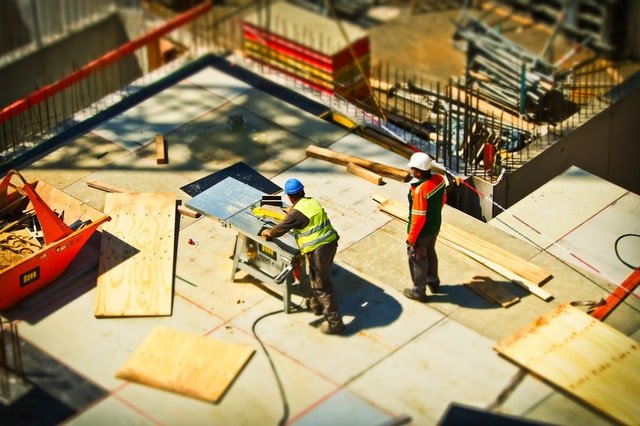
There are many different ways that you could save money when developing a property, each one contributing to the overall cost-efficiency of the project. The development of a property of any scale is always still a considerably large undertaking, that can have a significant impact on your finances.
Therefore, whilst saving money in different areas can help with the overall cost, it is still vital to ensure you have more than enough financial security to go through with a project. Through this piece, we will be exploring some effective ways that can help to save you money whilst developing a property.
At Magnet Capital, we aim to help you get the best value for money when developing a property. In addition to offering development finance, we will be able to provide professional advice including ways to manage your costs and cash flow as effectively as possible.
Saving money when developing a property
One of the main areas of this process that you can save money on is through the building of the property. By trying to cut back where you can through the property’s physical development, you can save considerable chunks of money. Below is a list of some of the main areas to the building process you can save money through:
- Contractors
- DIY
- Reuse salvageable materials
- Sourcing your own materials
These four areas are vital stages to developing a property, and can collectively contribute a sizeable amount to the costs of this developmental process. By knowing where and how to save on these vital areas of construction, you could save a considerable amount of money on the development of a property as a whole.
Contractors
A contractor is someone who helps in this development by providing the building equipment, materials, and workers needed to construct a property. As a contractor controls many of the major aspects that go into this physical development of the property, it is important to pick one who not only understands your budget, but will also help you to make the most out of your money.

It is always good to compare different contractors, helping you to get someone who meets your required standards, understands both your budget and your vision for the property, whilst also working for a great price.
DIY
Whilst contractors are there to help you build up your property, by picking and choosing various tasks to construct yourself, you could help to shave off hundreds, and even thousands of pounds from the overall cost of development. Although this can be quite a long and tedious process, by doing a sizeable portion of the handy work yourself, you can help to save money when developing your property.

Whilst this is a great and effective way to save money, it’s worth mentioning that DIY should only be done when you have full confidence in your abilities for each task. Ensure that all projects done around the property that are DIY are done effectively and with the greatest of care.
Reuse salvageable materials
Some materials your contractor will have to order in, however, when developing a property on land that already has building structures on it, it may be good to inspect these structures and see if any of the materials are salvageable for reuse. This can help to cut the cost down of the amount of materials ordered in for the development of your property, and therefore the overall cost of the property’s development.
Sourcing your own materials
Whilst the contractors will, in some circumstances, know where to get you the best materials for the best prices, doing some digging yourself is only going to improve the cost-efficiency of the project. By helping the contractor to look around on the best deals on all materials and features to the property, you can help to improve the cost-efficiency of your property’s development.
See also, typical costs when developing a property.

Tips for being a good landlord
If you are renting out a property that you own to people, it should be one of your top priorities to make sure that you are keeping your tenants happy. This is important for a number of reasons. Why? If you keep those who are living in your property satisfied, you can increase tenant retention, reducing the need for you to spend time as well as money finding new tenants to replace the existing ones. Furthermore, being a good landlord also creates mutual respect, increasing the likelihood of your building being kept in good condition.
But how exactly do you keep your tenants happy? As property development finance specialists, we have a lot of experience in this field, so we have created this guide to talk you through the main things you should keep in mind when renting out a property to people.
Give tenants space
One thing that no tenant likes is to feel as if they are being hassled by their landlord. Do not attempt to try and become their friend or neighbour by regularly visiting unannounced to the property. Not only is this likely to annoy your tenants, but it will also leave them feeling on edge. In addition, it is illegal to turn up as a landlord to a rented property unannounced, without providing 24 hours notice beforehand.
Maintain the property
One of the best ways of being a good landlord is to make sure that things that need to be fixed in the house you rent are quickly dealt with, and properly. Making sure that you regularly maintain the property is a surefire way to keep your tenants happy.
Put safety first
If you are a landlord, you are legally obliged to make sure that the property you rent out adheres to health and safety standards. This means making sure that all electrical and gas equipment has been safely installed and checked on an annual basis by a registered engineer.
Furthermore, you should ensure that there are fire alarms and carbon monoxide alarms fitted in the house, and make sure that batteries are regularly replaced.
Not only does this make you a good landlord, but it also helps you too: if you do not comply with health and safety regulations, you run the risk of not only putting your tenants at danger but also invalidating your landlord insurance entirely.
Make sure your tenant’s deposit is protected
An additional one of you rights as a landlord is that you need to keep your tenants’ deposit in an approved deposit scheme so that both you and the tenant are fully protected.
Based on the rights of the agreement, if you fail to choose one of the three main approved deposit schemes in the UK, then you could face severe financial consequences: you could end up having to face legal proceedings, as well as a potential fine which is the equivalent of three times the amount of the deposit in question.
Don’t do things cheaply
If you have great tenants and want to keep them, don’t try to cut corners by refusing to do things such as upgrade necessary appliances or refusing to repaint when it is needed. If you fail to reasonably maintain the property for the good tenants you have already, then its worth remembering this work will still be needed to be carried out when you need to replace them.
Think carefully about raising the rent
Another thing you should think very carefully about is increasing the rent, as you could run the risk of your tenants upping sticks and leaving completely. It is worth remembering that change-overs can be considerably expensive if they do decide to leave when you think about the cost and the inconvenience of arranging new tenancy agreements, viewings and credit checks.
Be easily contactable
There is nothing worse for many tenants of finding it almost impossible to contact their landlords when they need to, therefore, making sure you give them your mobile number and an email address so that your tenants can contact you if required. It is worth noting that tenants are only likely to contact you in an emergency only.
Do an inventory
Whilst writing up an inventory can take a long time, it is absolutely worth doing it if you want to be a good landlord. This is because it provides you with details of the contents and condition of the property on the day the tenants move in, meaning that in the event that there are disagreements regarding damage during the tenancy, you have evidence to fall back on. You should make sure that the inventory is as thorough as possible.

Are you looking to buy a home and get on the property ladder? Or alternatively, are you a property developer looking to purchase a building in order to renovate and sell on? You might be immediately considering to get a mortgage in order to buy a property, but did you know that there are other options available to you too? We take a look at some of the most popular alternatives to traditional mortgages.
Cash buyers
A cash buyer refers to someone who has the cash available upfront in order to purchase a property without needing to get a mortgage. It is possible that this can be done on an individual basis, or by a firm. Choosing a cash buyer in order to finance your mortgage can have a number of benefits, including helping to make the house sale process quicker, and it is also possible that it can help prevent a chain-forming beyond the purchaser.
Cash buyers are commonly homeowners who have already sold their home or simply have a lot of disposable money available and do not need a mortgage.
If you decide to use a cash buyer instead of getting a mortgage, you will typically be given a cash offer after a formal valuation of the chosen property. If you accept the offer, it is possible to complete the sale then within a timeframe that best suits your needs.
Development finance
Another option available to you is development finance when purchasing property, especially if you are a property developer. This type of finance is primarily aimed at those who intend to renovate, build up or extend a new property from a plot of land.
One of the main reasons why development finance best suits buyers who intend to develop a property is that the loan values are broken down into construction costs and for also purchasing the land too.
All funds are provided to you in stages during the construction project after a valuation from a surveyor. As a result, this type of property finance can help you to budget carefully during the project, maintain positive cash flow and ultimately avoid overspending.
Bridging loans
Bridging loans are aimed at those who are looking to complete properties on a fairly strict deadline. This includes buyers who are intending to complete on an apartment or building within a 2-to-4 week period.
One of the main reasons that bridging loans are so popular as an alternative form of property finance is that the loan can be sorted out far quicker than is standard with a traditional mortgage, which can take months to go through.
Types of buyers that commonly use bridging loans to buy property including homeowners intend to move but have yet to sell their existing property, those looking to raise finance for business purposes or investments, and homebuyers who have bought a property at auction. Your security is at risk so if you do not keep up with repayments, your property is at risk of repossession from the lender.
Help-to-Buy equity loan
Help to Buy equity loans are also a viable alternative to standard mortgages. This government loan is available in England and Wales and helps people to put down a deposit for a house at a quicker rate, and it is low in interest.

Mortgages are not the only form of funding available to purchase property.
In terms of eligibility criteria, the house you intend to buy will need to be a new build registered with the Help to Buy Scheme. The purchase price can be up to £600,000 in England or £300,000 in Wales, and it can be the only property that you own.
It is also worth keeping in mind that you will need a 5% deposit in the first place, with the Help to Buy loan then lending to you an additional 20% (or 40% in London) and additional funding will be needed through other forms of finance.
This is designed to help first time buyers or those looking for assistance when getting on the property ladder.
Shared Ownership
In the UK, it is also possible for you to buy a home via the shared ownership scheme, and it is also possible to do this with a housing association or council property.
The scheme enables you to buy between 25% and 75% share of a leasehold property, and then you pay off the remainder as rent. To be able to apply for shared ownership, you need to earn less than £80,000 a year, and fall into one of the following categories:
- You are a first-time buyer
- You are an existing shared owner
- You used to own a home, but it is no longer possible for you to purchase one as you can’t afford to.

What is development finance?
Development finance offers finance used for developing, refurbishing or constructing a property. The end goal can be to rent out the property to tenants or sell it for a higher price once completed. It is a type of specialist finance commonly used in order to develop residential and commercial properties.
The uses for development finance
There are a number of different reasons why someone may opt for development finance such as:
- To help assist with the funding of a large development project, such as conversion project or a new build
- Residential redevelopments involving considerable structural work
- Smaller development works
- Quick access than applying for a mortgage
- Avoid traditional property chains
- More specialist for buying land and developing it
Properties include:
houses, flats, flats, barns, farmhouses, garages, warehouses, offices, storefronts and more.
Development finance lending criteria
When looking at applying for a development finance loan, you should keep in mind the following, as most lenders will assess you against the following eligibility criteria:
- Terms of the loan: this is typically between 6 and 15 months, but depending on the lender it can be more than this
- Feasibility of the project: if the lender has too many concerns about your development project, the application may be declined
- Security: the level of security for the site or building should be of a good standard
- Level of experience: the applicant should have a good commercial background or experience in property
- Location: this will also be taken into consideration by a property finance specialist.
- Loan to value maximum: the lender will usually provide in the region of 55% of GDV
How can I apply for development finance?
If you are applying for development finance, keep in mind that it does not work in the same way as standard mortgage applications.
In most cases, property development specialists will assess the value of the property, and determine what the loan amount will be based on this assessment, as well as the borrower’s overall eligibility.

Development finance can help to realise your dreams of carrying out a renovation project.
At some point, you may need to provide details such as:
- Development costs
- Development appraisal
- Planning permission details
- Details of the building or site, such as the price of the site/property as well as the location and value
- Gross Development Value details
- Company structure
- Details of all applicants involved
- Asset and liability statement for applicants involved
- Details of the main contractor
- Details of the project manager for the development project
You may also need to provide paperwork to apply, which can include the following:
- All drawings and designs of the development project
- A detailed breakdown of all costs
- A complete schedule of works that will be carried out
- A planned exit strategy
- A completed Asset, Liability, Income and Expenditure Summary (ALIE)
How are development finance funds transferred?
If you are successful with your development finance application, you will receive your loan in stages by Magnet Capital.
There are a couple of reasons why this happens: first of all, payments are given in stages to ensure that the money is always proportionate to the overall value of the work that is being carried out in your project.
Initially, as part of the first stage of how development finance works, you will receive a certain amount upfront in order to secure your site or building. The amount you receive will be determined prior to signing the contract.
Payments are released each time current work on your project has been signed off by a surveyor (who is typically instructed by your lender to manage the site and work undertaken). If all current work is approved and it has met the terms and conditions of the loan, further instalments are provided.

Those looking for property finance will often confuse bridging finance and development finance. Whilst it is true that they do have similarities with each other, such as:
- They can be used to help fund the purchase of residential and commercial properties
- They are secured loans
- They are often used to avoid traditional property chains
They do also have a number of differences. If you are looking at getting specialist property development finance to help you buy a property, it is important to know the difference between the two, so that you can find the right product that you will require.
When is bridging finance used?
Generally speaking, bridging loans are linked to completing properties on a tight deadline. This means that most borrowers tend to opt for bridging finance when they need to complete on a flat or buildings within a month, or sometimes as little as two weeks. It can also be a popular option for:
- Buyers looking to purchase a property at an auction house
- Homeowners who are moving, but have yet to sell their existing property
- Those raising finance for business growth
When is development finance used?
Those applying for development finance will use this for property development purposes. This means that this kind of specialist finance is better suited to those who:
- Are looking to renovate a new property from a plot of land
- To cover construction costs
- To extend or build up a new property
How funds are released with bridging finance
If you decide to go with a bridging loan, this will typically be provided upfront in one lump sum, enabling you to complete the purchase of a property on time. For an auction, this is particularly important, as you need to provide the full funds within 28 days of the gable hitting.
How funds are released with development finance
If you choose development finance, the funding you receive will usually be in instalments, based on different stages of the property development process. Payments will be provided once the current work has been signed off by a surveyor.

Before applying for funding, it is important to be aware of the fact the loans are released differently depending on the product you choose.
One of the main reasons that money is released in instalments with this kind of finance is because lenders want to make sure that the loan amount given is proportionate to the value of the work that is being undertaken.
It provides a number of benefits, as it helps to maintain positive cash flow and it makes sure you keep within budget.
Average loan terms
When it comes to both bridging and development finance, they both tend to have very similar loan terms. This is usually anything from 6 months to 15 months in total.
Once the loan term comes to an end for either type of finance, the repayments are rolled up (unless they have been paid on a monthly basis) and then the loan is fully repaid once the sale or completion of a property has gone through.
In the event that the property has not been sold or completed, then the borrower has the option to refinance with the same lender, or choose a different lender. However, it is important to keep in mind that terms of the loan may not be so favourable to you the second time around with either loan types.
How the amount you borrow is calculated through bridging finance
Your bridging finance loan will be calculated on the loan-to-value (otherwise known as LTV). That means that the borrower needs to pay a deposit, and then the rest is paid by the lender.
How the amount you borrow is calculated with development finance?
Rather than your loan being based on the loan-to-value, a development finance loan is calculated on Gross Development Value (GDV). This refers to the overall value of the loan once all construction and renovations have been complete.

What can you do if you are rejected for planning permission?
If you have recently made a planning application for a building project and had it refused, you may be feeling disappointed, and perhaps wondering what your next step should be.
No need to fret: there are still a variety of options available to you if your application is denied. Read the guide from Magnet Capital below to see what you can do if your planning permission application is refused.
Why has my planning permission application been denied?
There are a number of reasons as to why a planning permission application can be refused by local authorities. The most commonly cited are as follows:
- Your building project would restrict road access
- The building overshadows a neighbour, blocking light
- The project would cause a loss of privacy to other surrounding homes
- It has a negative impact on highway safety
- Your property is a listed building
- The building project impacts on trees
- The project uses hazardous materials
- The building projects appearance would be out of character with the existing property
Make changes during the application process
The planning permission process will typically take eight weeks, or 13 weeks at most if it is a more complex project.
In this time, you can make objections to some of your plans and it could potentially determine the outcome of your decision.
If objections are raised, it may be possible to make changes to your current application, providing that they are small and will not require the planning officer to start the process again.
Objections raised during this time, and a willingness from you to make changes could also see the planning office grant you planning permission, based on the condition that you confirm that you will address the objections. You will have to provide evidence to your local authority of having done this, and usually within a certain time frame.
Resubmit your application
If planning permission has been denied, and it was rejected on planning grounds that you believe can be resolved, then it may be worth making changes to your existing application and then to resubmit once more.
In terms of cost, resubmitting a planning permission application may be a little time consuming, but it won’t cost you anything more, providing that you resubmit the planning permission application within a 12 month period, and the overall outcome of the project still remains fairly similar to the originally planned project.
Launch an appeal against the rejection
If you believe that your planning permission application refusal has been unfair, then it could be worth investigating further about an appeal.
If you do decide to make an appeal, you will have to do so within three months (the deadline for homeowners) whilst if you are a developer, major projects will require an appeal within six months.

Making alterations to your planning permission application could make all the difference.
If your planning permission application is rejected, the council will automatically send you further information as to how you can appeal the decision.
When making an appeal that council has to respond to it within a period of six weeks. After you have received a response, you have three weeks in order to comment and provide any supporting evidence.
Get professional advice
If you are unsure as to what your next step should be, and what changes you might need to make, why not look at getting professional advice first before making a decision? This may be particularly worthwhile if you are intending to go through the appeals process, which can tend to be complicated and are used for the intention of being the last resort. As a result, a property finance adviser could help to give you clarity on the next step you should take.

If you are looking to apply for development finance in order to be able to fund a building project, then it is important that you prepare as much as possible before making your application.
There are a variety of things that you should be taking into consideration, so that you can carefully plan the application that you make, and in order to ensure that getting a development finance loan is the right option for you. We take you through the information that you will need to provide, as well as overall lending criteria for development finance.
Lending criteria for development finance
It is important to keep in mind that development finance lenders will usually consider application on a case-by-case basis. However, it is still important to keep the following points in mind too:
- Term of loan: this will usually be between 6 and 18 months in total. Some lenders may be more flexible with the terms of a development finance loan, but you will usually find it is a period of 12 to 18 months without any penalties for paying the loan earlier than anticipated.
- Loan to value maximum: this will usually be in the region of a maximum of 55% of GDV. The lender will consider how much you are wanting to borrow as a percentage of the gross development value of the completed project. The maximum loan value that you can receive based on GDV is usually 55% but it can be higher.
- Experience: the level of experience of the property developer will also be important.
- Security offered: the building or site offered as security must be suitable
- Location of the development: the location of the site or building will also be taken into consideration.
- Feasibility of the project: the lender must believe that the project you intend to carry out is feasible. If they have too many concerns, your application could be rejected outright.
What information is needed for a development loan application?
In terms of the information that you will need to provide to a lender when applying for a development finance loan, you will find that you will require these details:
- Details of the site or building: this includes the value, location and the price of the site or property
- Development costs
- Development appraisal
- Planning permission details: what you are intending to build and what permission you have already for the site
- Gross Development Value details: this includes providing evidence of the expected end value to the lender.
- The details of all applicants involved. If you are a limited company then the directors details will all be required too. This includes the history of previous developments carried out, how successful they were, their CVs, and project profits from previous developments.
- Who the main contractor will be
- Who will be the project manager for the development finance project
- Company structure
- Asset and liability statement for the company directors or applicants involved
What paperwork will I need to provide?
Other important items you will need to provide include:
- A detailed breakdown of all project costs
- All designs and drawings of the project
- Planning permission details and applications
- A complete schedule of works for the project
- Details of professionals involved in the project
- Details of your previous development experience
- A completed Asset, Liability, Income and Expenditure Summary (ALIE)
- A planned exit strategy for the project being carried out

Development finance loans can make a fundamental difference to the process of renovating for property developers, helping to provide cash flow so that the work can be completed in the most efficient way possible, without having to worry about how the project will be financed, also helping to reduce potential stress.
However, if it is the very first time that you have applied for development finance, you may well be wondering as to how the funds are transferred, and how the overall process works.
In this guide, we will explain in detail exactly how the funds are transferred in different stages over the course of a building project.
Why is development finance given in stages?
It is important to remember that development finance loans are always released in stages through a number of payments. This is because development finance lenders want to ensure that the loan given is proportionate to the value of the work being carried out.
It is also to make sure that the loan is being used under the conditions initially agreed on by the two parties concerned.
Securing the purchase
The first stage of development finance funding will typically involve securing the site. The lender will usually provide an agreed set amount upfront, so that you the buyer are able to complete the purchase of a property.
Whilst the exact amount that is provided upfront will often be dependent on the development finance product that you choose, you can usually expect this to be somewhere in the region of 40% to 50% of the current valuation of the site.
From this aforementioned figure, charges and interest will be deducted, which will then leave you with the net development finance loan.
Payments in stages
Throughout the course of the build, payments will be released in stages by the lender. This is to help you to continue working on the building project. Payments are released once the current work has been signed off by a monitoring surveyor.
The surveyor in question is instructed by the development finance lender to manage the site and work, in order to ensure that everything is on track with the project.
Typically, the monitoring surveyor will carry out checks to ensure payments are released.These include checking that the work has been completed and meeting the terms and conditions of the loan itself.
This includes abiding by the agreed upon build schedule, as well as cost management and ensuring that the quality of the work carried out is to a high standard.
If the monitoring surveyor finds any discrepancies during the building project, compared to the agreed upon plan, then it is possible that the stage payments for development finance could be delayed.
Cash flow management
One of the great things about development finance is that it enables you to keep the cash flowing throughout a building project. Make sure that you follow the work schedule, as well as keeping a cash flow forecast to ensure the project runs smoothly.
Accuracy of building schedule
When it comes to development finance and cash flow, it is extremely important that your costings and build schedule is accurate in order to keep everything on track.
This is important, as whilst lenders will usually be happy to release equal amounts each month, you could find some months more expensive than others.

If you are looking to apply for funding through a development finance lender, it is highly likely that you will be using this loan in order to finance renovation or construction costs for a building you have purchased. However, the last thing you want to do when carrying out construction work is to poorly plan it, and potentially end up not getting the planning permission you required and having to knock the building down, or pay a fine. But which types of buildings need planning permission, or what kind of projects do? We decided to point out the key facts so that you are fully aware of when planning permission is needed.
Extensions
If you are intending to add an extension to your property (providing it is not a flat or maisonette) it will usually fall under the category of permitted development, therefore meaning that you will not need to get planning permission. This is as long as it falls into one of the following categories:
- The planned extension will not be higher than the highest part of the roof
- It is not going to e more than have the area of land around the original house. This means as it was seen in 1948, after this it is considered as newly built.
- The planned extension is not forward of the principal elevation or is it a side elevation that goes onto a highway.
- If it is a two-storey extension it is no closer than approximately seven metres to the rear boundary.
- The extension does not include raised platforms, verandas or balconies
- If it is a rear extension, the maximum height of your (single-storey) extension is no more than four metres high
- If there are any upper-floor, side facing windows, these have been obscure-glazed.
Sheds, garages and greenhouses
If you are deciding to create an outbuilding like a shed, garage or greenhouse, these will also fall into the permitted development category. It is possible for you to build a garage or an outbuilding on your property without getting permission providing that it is considered to be of reasonable size.

Have you checked carefully to see if you are liable to get planning permission for your renovation?
That is, it should be no higher than 4 metres. Of course, there can be exceptions where planning permission may be required if it is not a typical outbuilding. In this scenario, contact your Local Planning Authority or your Planning Portal in order to obtain more details of potential planning exemptions for outbuildings.
Indoor renovations
If you are looking to carry out internal works to a building that you have bought, such as a garage conversion, adding a new kitchen or bathroom, creating a loft conversion or rewiring, you will also not usually need to get planning permission.
However, if you live within a Conservation Area, or if you are looking to make renovations within a Listed Property, then you are advised to check with your local planning authority (LPA) first.
Changing the use of a building
If you are looking to undertake a project that means you are hoping to completely alter the building from its original use, then it is probably the case that you will need to apply for planning permission.
New building
Looking to create a new building entirely? You will also most likely need to get planning permission for it before going ahead and start construction works. Deciding to go ahead without getting this permission is risky, and financially so too. You could receive an enforcement notice from your local council, and ignoring could entail a number of legal and financial consequences for you.
How much does a planning application cost?
If you need to get planning permission for the work that you intend to carry out, then there will be fees you will need to pay. If you are making a full application for a new single dwelling in England, then the cost will be £462, whilst different fees apply in Scotland, Wales and Northern Ireland. Meanwhile, if you require planning permission for certain types of home improvements you are carrying out, this will cost you around £206 in England.
How do I apply?
Luckily, to simplify the procedure, all local planning departments use the exact same application form for planning permission, known as 1APP. This form can be found in your local area and the application can be done online via a Planning Portal.









Recent Comments